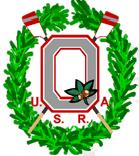2007 Season Preview - Georgetown University

In 2001 Georgetown entered the IRAs for the first time and didn't make the petites. In 2002 they made the petites but finished second to last. Two-thousand-three brought a leap forward to a fourth place finish and a medal seemed to be within the Hoyas' grasp. But 2004 brought another fourth place, followed by the same in 2005. The bronze medal was tantalizingly close, less than three seconds away in 2005, yet never gave Georgetown the satisfaction of resting around their necks. Then came 2006. Last season the Hoyas said "No thank you" to bronze, took silver, and finished second in the nation for their best season ever. It was a breakthrough season as a program that previously competed for the attention of the heavyweight coach, got its own head coach and showed the league what a little focus can do. Coach Jim O'Conner focused the mind, focused the body, and focused the leg drive, while removing the ghosts of the number four.
But, all that was last year. This year brings opportunity. The opportunity to prove that Georgetown isn't simply squatting on the awards dock, but actually purchased real estate. The opportunity to prove that they are a force and pity the poor crew that lines up against them. That opportunity presents itself in 2 and a half weeks on March 17th at the Jesuit Invitational. Last year the Hoyas spanked St. Joe's, and there's a reasonable chance the Hawks will be back along with Holy Cross (who raced a light eight in the fall) and perhaps Loyola. It should be nice way to open the season for Georgetown, although not necessarily an easy way, as St. Joe's (at least) can have the personnel to create some speed.
On the 31st Radcliffe comes to town for the Class of 2004 Cup. No hype is needed for this race between last year's number 2 and number 3 teams. (This is the same day as the Bucknell, Georgetown, MIT, Penn race in Philadelphia. It's really a shame to see these schools load up a trailer and not bring the lightweights along. As great as the Radcliffe race will be, I'm sure it could have been rescheduled so the Philadelphia race could've included three top lightweight crews. Maybe the coaches could've talked about this one ahead of time?)
On April 6th is the George Washington Invitational. This is on home water so the lights will no doubt be racing, but it's not clear if they'll race other lightweights or only heavyweights. The next week is Knecht, followed a week later by a visit from Princeton. Since Princeton will miss Knecht, this will be the Hoyas' first look at the Tigers.
On April 28th Georgetown heads west to Ohio for what I'll call the Best New Race of the Year. [Update: A reader informs me that this race has been moved to Indianapolis.] In a race hosted by Ohio State, Georgetown will take on the Buckeyes, Stanford, and Wisconsin. To some, this may look like just another in-season race. To me, it's another sign of the growing strength of the women's lightweight league (no, I'm not referring to a real league, I'm just tired of using "category" or "sport," so I'm going to use "league"). The fact that four lightweight crews, three of whom are from west of the Pennsylvania border, can get together for a meaningful race outside of the east coast, shows how far we've come from the dark ages of the early 90s. This is a coup for Ohio State and they should be congratulated for stepping up and organizing this race (interestingly enough, this race is not on OSU's schedule, so perhaps it is still in the forming stages?). Kudos also, to the visiting crews for making the trip, with Stanford winning the award for farthest distance traveled. Mid-May brings Eastern Sprints, with IRAs following at the end of the month.
Georgetown starts the season with momentum and confidence. Winning the silver last year out of the reps had to renew the Hoyas' faith in themselves. Five athletes and the coxswain return from that boat, bringing enough big race experience to spread around. Last year came pretty close to being the "Year of the Hoya," but for that, they need to take one more step - win the gold. (Calendar updated)
Below is Georgetown's start at the HOCR (Coach alert - includes a slow motion look):
Download the high res version here.












